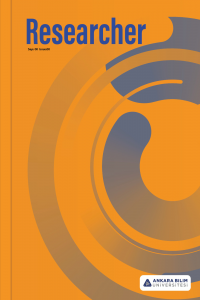Proses Güvenliği Yönetiminde Öncü ve Gecikmeli Göstergelerin Geliştirilmesi ve Uygulanması
Proses Güvenliği Yönetimi (PSM), Öncü ve Gecikmeli Göstergeler, Temel Performans Göstergeleri
Developing and Implementation of Leading and Lagging Indicators in Process Safety Management
Process Safety Management (PSM), Leading and Lagging Indicators, Key Performance Indicators,
___
- [1] Pęciłło, Małgorzata. "Identification of gaps in safety management systems from the resilience engineering perspective in upper and lower-tier enterprises." Safety Science 130 (2020): 104851.
- [2] Van Derlyke, Peter, Luz S. Marín, and Majed Zreiqat. "Discrepancies Between Implementation and Perceived Effectiveness of Leading Safety Indicators in the US Dairy Product Manufacturing Industry." Safety and Health at Work (2022).
- [3] Chen, Fu-Li, et al. "Development and Validation of an Integrated Healthy Workplace Management Model in Taiwan." Safety and Health at Work (2022) Vision zero.
- [4] Zwetsloot, Gerard, et al. "Vision zero: Developing proactive leading indicators for safety, health and wellbeing at work." Safety Science 130 (2020): 104890.
- [5] Payne, Stephanie C., et al. "Safety climate: Leading or lagging indicator of safety outcomes?." Journal of Loss Prevention in the Process Industries 22.6 (2009): 735-739.
- [6] Versteeg, Katelyn, et al. "Utilizing construction safety leading and lagging indicators to measure project safety performance: A case study." Safety Science 120 (2019): 411-421.
- [7] Xu, Jing, et al. "Implementing safety leading indicators in construction: Toward a proactive approach to safety management." Safety Science 157 (2023): 105929.
- [8] OSHA, Process Safety Management. U.S. Department of Labor, Occupational Safety and Health Administration, No.3132, 2000.
- [9] CCPS (Center for Chemical Process Safety),Guideline for Process Safety Metrics, American Institution of Chemical engineers, 2008.
- [10] UK HSE, Step-By-Step Guide to developing Process Safety Performance Indicators, United Kingdom HSE Dept., 2006.
- [11] OGP, Asset Integrity- the Key to Managing Major Incident Risks, International Association of Oil & Gas Producers Report 415, 2008.
- [12] OGP, Process Safety- Recommended Practice on key Performance Indicators, International Association of Oil & Gas Producers Report 456, 2011.
- ISSN: 2717-9494
- Yayın Aralığı: Yılda 2 Sayı
- Başlangıç: 2013
- Yayıncı: Ankara Bilim Üniversitesi
Cezalandırılmış Regresyon Modelleri Kullanılarak Tıbbi Atık Üretiminin Tahmini
Proses Güvenliği Yönetiminde Öncü ve Gecikmeli Göstergelerin Geliştirilmesi ve Uygulanması
Siamak CHERAGHİ, Mazdak KHODADADİ-KARİMVAND
Afet Durumları ve Tesis Kurma Oyunları
Medine DEMİR, Pınar USTA, Sırma Zeynep ALPARSLAN GÖK
Zekeriya ÖZKAN, Duygu ARUĞASLAN ÇİNÇİN, Marat AKHMET
Karar Desteği Olarak İş Zekası Sistem Yazılımının Seçimi: Bir Vaka Çalışması
